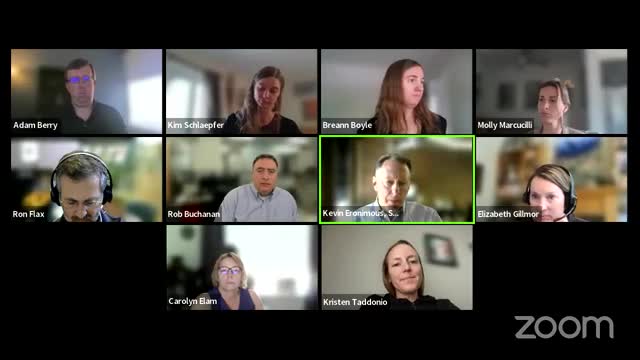Colorado board debates home size thresholds and fuel choice fairness in building code
April 27, 2025 | Energy Office, State Agencies, Organizations, Executive, Colorado
This article was created by AI summarizing key points discussed. AI makes mistakes, so for full details and context, please refer to the video of the full meeting. Please report any errors so we can fix them. Report an error »

In a recent meeting held by the Colorado Energy Office, discussions centered around the state's evolving Energy Code, particularly focusing on the Low Energy and Carbon Code. As board members gathered, the atmosphere buzzed with ideas about how to make energy efficiency standards more inclusive and adaptable to various housing types and climate zones.
One of the key topics was the proposed threshold of 5,000 square feet for residential homes. Board members expressed a desire to explore flexibility within this limit, questioning whether it could be adjusted to better accommodate different housing needs, especially for starter homes and multifamily units. The conversation highlighted the importance of ensuring that energy codes do not inadvertently penalize smaller or more affordable housing options.
Tim, a board member, emphasized the need to consider the impact of these codes on attainable housing, particularly in areas like Broomfield, where there is a strong push for affordable multifamily developments. He urged the board to look beyond single-family homes and incorporate similar considerations for multifamily housing, recognizing the critical role these units play in addressing housing shortages.
Another significant discussion point was the potential for tiering energy requirements based on home size. This approach could allow for less stringent standards for smaller homes, making it easier for first-time buyers to enter the market without compromising energy efficiency goals. The board acknowledged the complexity of balancing these requirements across different climate zones, with some members suggesting that variations could be beneficial as long as they do not weaken overall standards.
The meeting also touched on the need to address perceived biases in the code against all-electric equipment. Board members expressed a collective interest in creating a more equitable framework that does not favor one fuel type over another. This conversation opened the door to exploring how other communities have navigated similar challenges and what lessons could be applied in Colorado.
As the meeting progressed, the board aimed to ensure that the energy code serves the diverse needs of the state while promoting sustainability and affordability. With ongoing discussions about the nuances of housing size, fuel types, and regional differences, the Colorado Energy Office is poised to shape a more inclusive energy future that resonates with all residents.
One of the key topics was the proposed threshold of 5,000 square feet for residential homes. Board members expressed a desire to explore flexibility within this limit, questioning whether it could be adjusted to better accommodate different housing needs, especially for starter homes and multifamily units. The conversation highlighted the importance of ensuring that energy codes do not inadvertently penalize smaller or more affordable housing options.
Tim, a board member, emphasized the need to consider the impact of these codes on attainable housing, particularly in areas like Broomfield, where there is a strong push for affordable multifamily developments. He urged the board to look beyond single-family homes and incorporate similar considerations for multifamily housing, recognizing the critical role these units play in addressing housing shortages.
Another significant discussion point was the potential for tiering energy requirements based on home size. This approach could allow for less stringent standards for smaller homes, making it easier for first-time buyers to enter the market without compromising energy efficiency goals. The board acknowledged the complexity of balancing these requirements across different climate zones, with some members suggesting that variations could be beneficial as long as they do not weaken overall standards.
The meeting also touched on the need to address perceived biases in the code against all-electric equipment. Board members expressed a collective interest in creating a more equitable framework that does not favor one fuel type over another. This conversation opened the door to exploring how other communities have navigated similar challenges and what lessons could be applied in Colorado.
As the meeting progressed, the board aimed to ensure that the energy code serves the diverse needs of the state while promoting sustainability and affordability. With ongoing discussions about the nuances of housing size, fuel types, and regional differences, the Colorado Energy Office is poised to shape a more inclusive energy future that resonates with all residents.
View full meeting
This article is based on a recent meeting—watch the full video and explore the complete transcript for deeper insights into the discussion.
View full meeting
